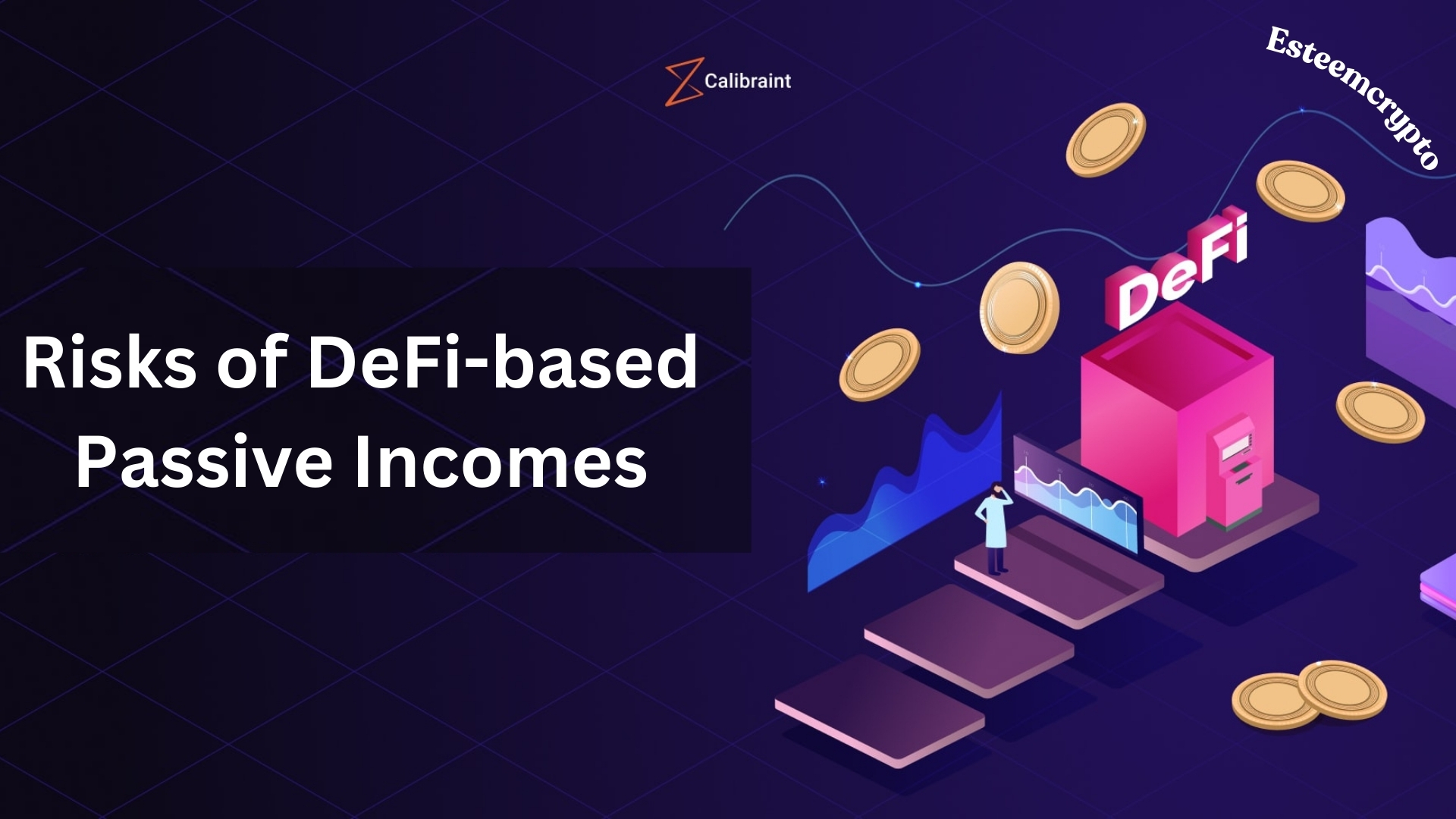Guide to Earning Passive Income with DeFi By Esteemcrypto

Earning Passive Income with DeFi. of blockchain technology, decentralized finance (DeFi) offers a viable substitute for conventional banking. The acronym “DeFi” stands for “decentralized finance,” which describes a wide range of financial services and products based on blockchain technology.
Decentralized financial applications (DApps) aim to cut out the intermediaries that traditional banks and other financial institutions have long supported. To achieve this, the technology eliminates the need to pay a commission to the bank and instead uses a trust mechanism based on blockchain technology to facilitate safe P2P transactions.
Decentralized finance (DeFi) investors now have more opportunities than ever to generate passive income thanks to the proliferation of DeFi-related use cases. To earn passive income, investors must use their DeFi assets to validate transactions and run processes through the proof-of-stake (PoS) consensus mechanism. What kinds of passive income opportunities exist based on DeFi? Let’s investigate them.
DeFi Yield Farming (liquidity mining)

Earning Passive Income with DeFi: Increasing one’s cryptocurrency holdings through one’s current cryptocurrency holdings is known as yield farming or liquidity mining in the DeFi ecosystem. Yield farming is a method of investing that uses a liquidity pool based on smart contracts and entails staking or delegating cryptocurrency assets. To make DeFi protocols more liquid, the pool repurposes the invested bitcoins, and users get their fees cut.
You can invest and get returns with ERC-20 tokens like Ether ETH $2,907 on DeFi yield farms. In DeFi-based passive income, yield farming is often considered one of the riskier investments due to its programming to generate the best potential yield or return.
Liquidity pools allow cryptocurrency trading on DEXs by paying for “yield” or completing tasks like transaction confirmations. Each pool’s yield success will be based on the tactics applied to the smart contracts. The user’s token investment in the liquidity pool is another factor that will decide the payout.
Anyone can participate in a liquidity pool by lending or depositing cryptocurrency, and the operator or farmer’s ultimate purpose is to redistribute the assets in a way that maximizes the APY. An investment’s yearly return, including compound interest, can be expressed as an annual percentage yield (APY). The average annual percentage yield (APY) offered by conventional banks is 0.06%. However, DeFi offers a substantially larger potential return.
DeFi Staking
Staking in DeFi is similar to yield farming, so it encourages people to keep their cryptocurrency longer. To become a validator on the blockchain, individuals must deputize or lock up their crypto holdings, similar to yield farming.
Depending on the operator’s plans, users can receive benefits through staking by locking their tokens for a specified amount of time. As with any blockchain, the Ethereum blockchain has a minimum requirement of 32 ETH before a person may be added as a validator.
In addition, the length of time spent staking, and the network’s rewards plan are the two main variables that will affect the potential earnings from DeFi staking. Staking has monetary rewards but also improves performance and helps secure blockchain projects even more.
DeFi Lending
Earning Passive Income with DeFi: A wide range of investing techniques incorporating cryptocurrency-based passive revenues is collectively called lending. In decentralized financing, or DeFi, investors and borrowers can communicate directly using pre-programmed smart contracts. To rephrase, with DeFi lending systems, investors may market their crypto tokens, and borrowers can borrow them with interest and repay them within a specified time frame.
Using smart contracts can reduce or eliminate the collateral need and the hazards connected with lending in conventional finance. Most loan applications do not include background checks, even though they are important for reducing fraud and credit risks.
Peer-to-peer (P2P) lending platform DeFi enables borrowers to borrow cryptocurrency directly from investors, who may demand timely interest payments. Smart contracts eliminate the middleman often involved in traditional lending by facilitating the global pooling and distributing of crypto assets. Additionally, the underlying blockchain technology enjoys the immutability and transparency of all parties involved in a transaction.
Risks of DeFi-based Passive Incomes

There is always the chance of losing money with every investment, but there is also always the chance of making a lot of money. Scams, hacking attempts, and overly optimistic or defective smart contracts pose the greatest threat to DeFi-based revenue streams.
Cryptocurrency price fluctuation might result to a loss of earnings during a bad market, as DeFi-based revenues are directly proportionate to the amount of tokens given out. Those who put money into the tokens often sit on them until their value skyrockets, at which point they cash out their gains.
Furthermore, pool owners’ intentions might potentially affect the level of risk associated with DeFi investment strategies. As a result, you should look into the service providers’ reliability by looking at their payout records.
Tracking Your Portfolios
There are a lot of different ways to make passive income in DeFi, but it can be a pain to keep track of all your wallets on different platforms. This is why a lot of DeFi traders are using portfolio trackers or aggregators; these tools help you manage and assess your whole portfolio from one central location and link to many protocols and wallets. The yield aggregator finds the most efficient way to get profit. It might include a wide range of decentralized services with different economic models, and it could include hundreds of farms and vaults.
To take it a step further, some aggregators offer cross-chain integrations and support for numerous wallet connections. This opens up the possibility of chart views that can instantly examine data from several aggregators. By facilitating the transfer of both data and monetary value between different blockchain networks, cross-chain technology strengthens the bonds between them. This breaks the immutable nature of blockchains and creates a decentralized but interconnected ecology.
Cross-chain connectivity’s ability to monitor portfolios across wallets and discover possible APY returns across pools are two more benefits. In addition, any user can utilize any of these ways to generate passive income with their digital assets. Without the need for intermediaries, they offer the crypto markets liquidity and cash, which is crucial for trading.
Be wary of “rug pullers” or scam projects, though; their only goal is to steal your locked tokens and then sell them in liquidity pools, robbing you of your money. Look for publicly available smart contracts that have been auditing by an impartial third party, and make sure the farms and platforms you plan on using have a good reputation. Therefore, before committing to liquidity pools, staking, or lending, investors should conduct thorough research on the companies involved.




